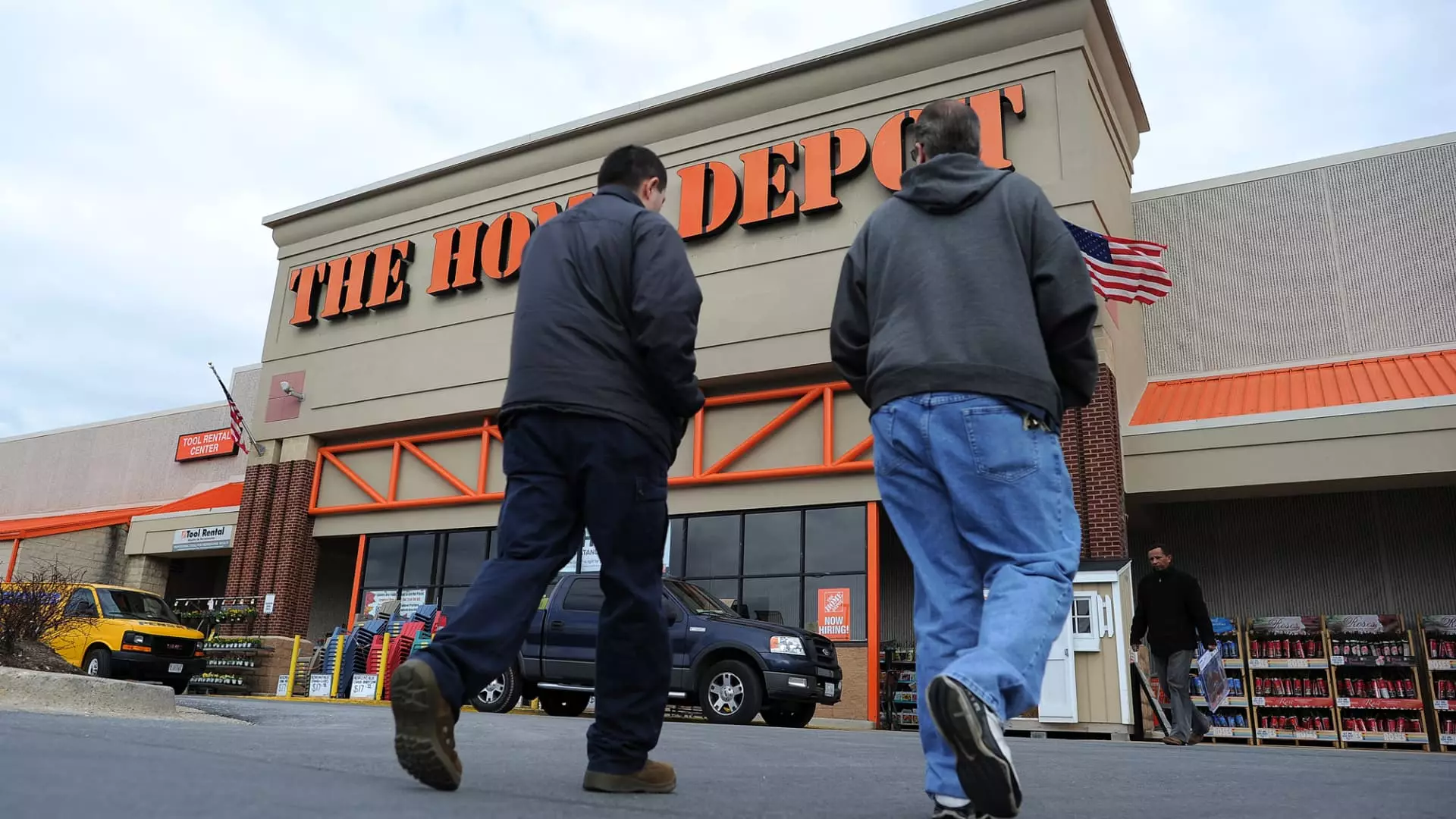Home Depot recently exceeded quarterly expectations, but projected weaker sales for the remainder of the year due to various factors affecting consumer demand. The home improvement giant anticipates a 3% to 4% decline in full-year comparable sales, a significant shift from the previously expected 1% decrease. Chief Financial Officer Richard McPhail highlighted the impact of high interest rates and consumer hesitation on purchasing decisions. Despite completing the acquisition of SRS Distribution, boosting total sales with additional offerings, the company has revised its forecast downwards when excluding sales from the acquired company.
McPhail pointed out that consumers have adopted a “deferral mindset” since mid-2023, deferring major purchases such as home renovations and projects due to increasing interest rates. However, recent surveys have shown that consumers are now also holding back due to a sense of economic uncertainty. This cautious behavior has contributed to a slowdown in demand for various home improvement items like lighting and flooring, impacting Home Depot’s overall performance.
In the second fiscal quarter, Home Depot reported a decrease in net income and a slight rise in revenue compared to the previous year. Comparable sales dropped by 3.3% overall and 3.6% in the U.S., falling short of analyst expectations. This marks the seventh consecutive quarter of negative comparable sales for the company. As a result of these figures, investors have responded positively, with the company’s shares rising nearly 2% in early afternoon trading.
The consumer uncertainty seen at Home Depot reflects broader trends in the retail sector as consumers navigate rising costs and a changing economic landscape. With ongoing discussions around inflation, everyday expenses, and the possibility of a recession, retailers must adapt to shifting consumer behaviors. Across the industry, companies like Walmart, Target, Macy’s, and Best Buy are also gearing up to announce their earnings, providing further insights into consumer spending patterns.
Despite the current challenges, Home Depot remains optimistic about the long-term prospects of the home improvement sector. The company’s leaders point to factors such as aging homes, housing shortages, and property value increases as indicators of sustained demand in the future. Additionally, the majority of Home Depot’s customers are financially stable and employed, suggesting that the current spending downturn may be temporary. Looking ahead, the company is focused on capitalizing on the opportunities presented by the evolving market dynamics.
As Home Depot navigates the complexities of consumer behavior, economic trends, and competitive pressures, its ability to adapt and innovate will be critical to its future success. By understanding the underlying factors influencing consumer decision-making and proactively responding to market shifts, the company can position itself for long-term growth and resilience in the ever-changing retail landscape.

Leave a Reply